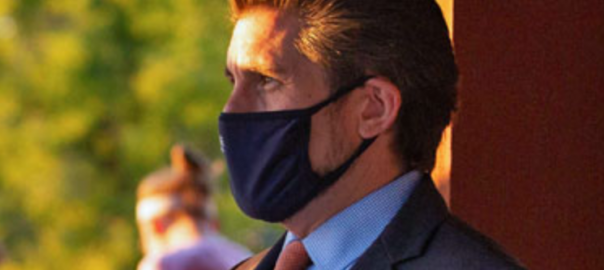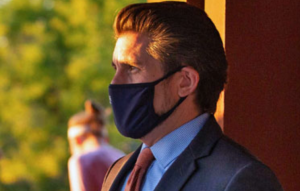
The Pandemic Economy Has Left Millions Struggling. A New Approach in Higher Ed Could Help Pull Them Out

As we begin this new year, it’s important to reflect on where we are and how we move forward in this seminal moment in our history. COVID-19 has been indelibly seared into our collective consciousness, changing our lives in so many ways. In education, the pandemic has not only laid bare the disparities in our system, but also how the landscape of education has been undergoing a significant transformation for some time—particularly post-secondary education.
In America, where college was once limited to only a privileged few, we’ve greatly increased access to higher education to millions of Americans over the past 70 years—in part by building a vast network of public colleges and universities coupled with expanding incentives to make college more affordable, as with the GI bill.
But the dawn of a new year, with the pandemic underlining all the shortcomings of our current models, invites us to reflect on how we can do better. Over the past year, the pandemic has tested us deeply. We have had to quickly adapt to reopen campuses safely, while also facing declining applications and enrollment that have forced many institutions to reduce faculty and staff, or most dramatically, close their doors for good. This year at the largest system of public higher education in the country—the State University of New York—our applications are down approximately 20 percent, one of the largest annual decreases in the System’s 73-year history.
But although the pandemic has exposed and heightened many of these challenges, it did not cause them. In higher education, the tide of change has been slowly rising, building and building to a force that we can no longer afford to ignore. In 2015, well before the pandemic, a Moody’s analysis projected a rapid increase in the number of colleges that would close every year. The wave of change has been gaining momentum due in part to shifting attitudes about the value of a college education. In 2016, a poll showed that half of the nation said college wasn’t worth it—the half that most needed the social mobility afforded by post-secondary education.
Before the pandemic, the changing workforce was demanding at least some level of college education in most fields, leaving many workers behind or struggling to adapt. Now, the economic fallout of the pandemic is hitting those workers harder than anyone. This is when workers—mothers, fathers, caretakers, college dropouts, essential workers, veterans—need the upward ladder of a college education more than ever. This is what public higher education is made for.
But higher education must adapt. We know the public needs flexible, affordable, and accessible lifelong learning programs to keep up with the changing demands of industry. The question, for us, is, “How?” Do we ride the wave of change—adapting and innovating—or do we let the wave crash down indiscriminately onto the current system and hope for the best?
Let’s ride the wave. And I believe public higher education in particular can lead the way. The first step in our transformation is our orientation, our approach.
To survive and provide value to more Americans who need post-secondary education for upward mobility and a shot at a better life, institutions of higher education must become post-traditional. So, what does it mean to be a post-traditional institution?
We must become more student-centric. We must challenge the perception of the elite academic in the ivory tower, preserving the good—the innovative research that makes the world a better place, the character-building study of classic thought—while demystifying the college experience and meeting our future students where they are.
We must also recognize that student demographics are changing. The 18-year-old graduate fresh out of high school is more and more joined by a broad cross-section of individuals from all walks of life—our active military service members to working parents—many of whom are looking to switch careers or update their skills for the changing workforce.
Finally, we must embrace the reality that education is also no longer a static two- or four-year process, but a life-long journey in which people—me, you, everyone—will need to retrain and learn new skills at various points during their lives and careers.
Adapting to the changing workforce doesn’t mean students are simply widgets being processed through the machinery of education and spit out into a job. While transforming our system, we must reject the ease of factory-line sameness offered by one-size-fits-all, big-box colleges currently permeating our communities online or in pop-up store fronts. The great existential threat in public higher education comes from outside institutions with the gloss and glam of slick advertising and their promises of plenty, which often turn out to be fool’s gold for students. We need quality, not just access.
At SUNY we are at the cutting edge of the new student-focused approach. We recently announced SUNY for All, an initiative to shatter the mystique of public higher education and tell individuals from all walks of life there is a place for you here, and an achievable path upward.
One of SUNY for All’s first programs was to establish a free Online Training Center for struggling New Yorkers who have run into dead ends and may feel like college or employment are out of reach. Now underemployed or unemployed New Yorkers can get free certifications in college prep or high-demand fields such as health, business, and advanced manufacturing. And, when they complete a free certification, they can enter the workforce or we give them priority admission and automatic acceptance into any of our 30 community colleges or SUNY Empire State College, which provides a wide range of flexible online programs for post-traditional students. In essence, we’ve adapted in the age of social distancing to use technology to expand high-quality online education. And we’ve only just begun.
Thanks to investment by New York State, we are creating new workforce training centers in underserved communities. The centers co-locate various SUNY colleges under one roof and provide various programs offered with flexible times to adjust to a person’s busy life, as well as provide extra one-on-one student support to make sure they complete their program. In essence, we’re going to the individual as opposed to them coming to us. We’re doing it on their terms, not ours.
Finally, we’re working to keep costs down for students. At SUNY, we have among the lowest tuition of any system in the nation and because of generous student financial programs nearly 50 percent of all students graduate without any student loan debt at all. But we’re going further, by lowering the cost of education for our active armed service members and veterans and investing in opportunities that give more students an opportunity to successfully attend college.
Malcolm X said, “Education is the passport to the future, for tomorrow belongs to those who prepare for it today.” At this key moment in our history—as new leadership emerges in Washington—and as we begin to pull ourselves out of this pandemic, higher education is positioned to provide those passports for a better and brighter future for generations to come.
Dr. Jim Malatras is the Chancellor of State University of New York and a member of Governor Andrew Cuomo’s COVID-19 task force.
